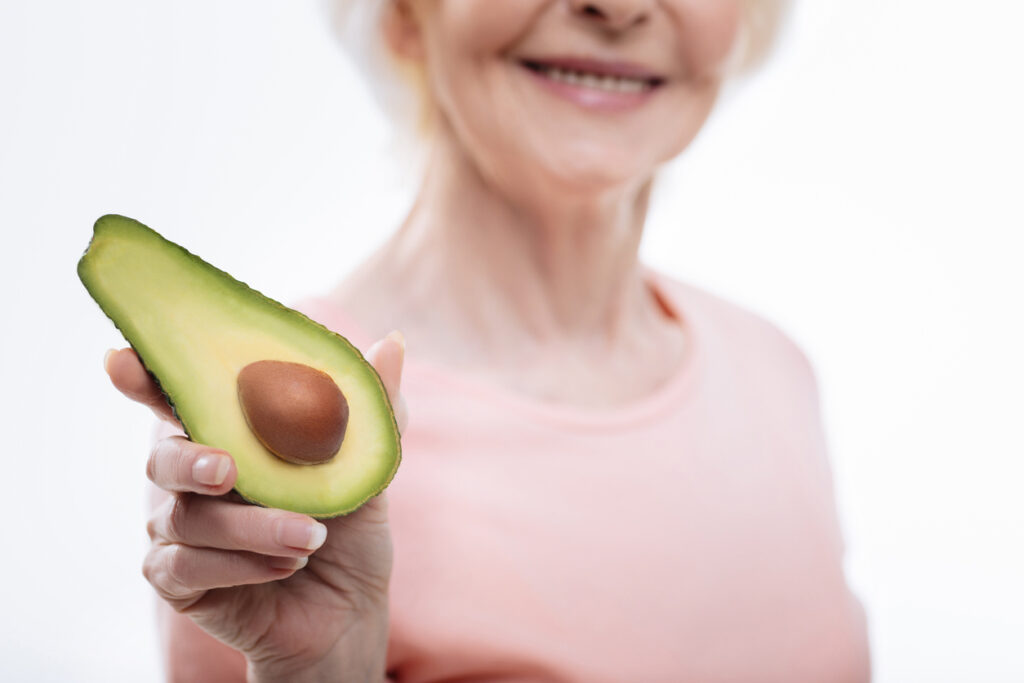You visit your local GP regularly. You take your medication. But what else can you do to ease your arthritic pain and free up your stiff joints?
While there is no diet that can cure arthritis completely, there are certain foods that if consumed regularly, can help improve your flexibility and ease your symptoms.
At South Australian Shark Cartilage, we are all about finding natural alternatives that are both effective and healthy at the same time.
Here are 10 foods with specific properties to help ease arthritis pain and improve flexibility.
1. OILY FISH
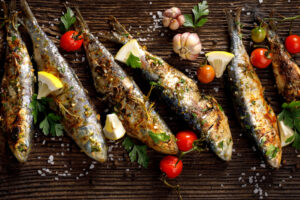
If you like fish, you’ll be happy to know that the oily variety (such as salmon, mackerel and sardines) are full of omega—3 fats. And why is this important? According to Arthritis Australia; “Studies show that eating foods rich in omega-3 fats can help reduce inflammation, particularly in rheumatoid arthritis”. (Footer Link #1)
Since inflammation is known as the leading cause of arthritis, it’s worth making oily fish dishes a regular part of your diet. Embrace those tasty and healthy salmon salads or even start your day with fish with some makerel or sardines on toast for breakfast.
2. NUTS AND SEEDS

Another fantastic source of anti-inflammatory omega-3 fatty acids are nuts and seeds. The Arthritis Foundation says; “Some nuts are rich in magnesium, l-arginine and vitamin E, which may also play a role in keeping inflammation under control.” *
Should I devour just any old nut? You may ask. Moore from the Arthritis Foundation says “Ideally, you should reach for raw, unsalted nuts”. Some of the best to include in your diet are walnuts, peanuts and almonds.
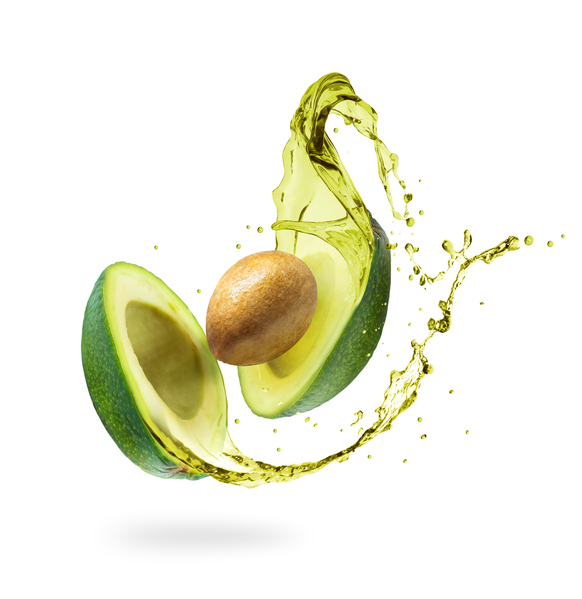
3. AVOCADO
Now who doesn’t love the wonderfully versatile fruit (yes!) that is avocado? And if you’re vegan, avocados are a great alternative to fish because they are another rich source of omega-3.
In fact, avocados also contact Vitamins E, C , zinc and Selenium. According to AvasunHealth, “Studies have shown that diets rich in these vitamins and minerals have positive effects on arthritis complications, such as pain, stiffness and inflammation.” (Footer Link #2)
They are so full of nutrients that adding them to your weekly shopping list should be a no-brainer.
4. OLIVE OIL
When the Mediterraneans stumbled on the wonder of the olive and its oil, we really have never looked back.
This versatile and much loved oil is so full of health benefits it’ll leave you breathless. Most importantly it has strong anti-inflammatory properties which is just what you need to lubricate your joints and ease your pain. The oil of the olive contains a particular antioxidant called oleocanthal which has been shown to work similarly to the anti-inflammatory drug, ibuprofen. (study link)
Some scientists claim that the oleocanthal in 3.4 tablespoons of extra virgin olive oil has a similar effect as 10% of the adult dosage of ibuprofen. (study link)
So take an olive leaf out of the Greek’s books and make olive oil a part of your daily diet – throw it in your smoothies, mix it in your avocado mash or douse it over your sourdough toast.
 5. DAIRY (YOGURT)
5. DAIRY (YOGURT)
There are varying opinions about including dairy in your diet and whether or not it is beneficial. It all comes down to the individual and how you respond to various dairy products. Of course for those who are lactose intolerant, dairy isn’t an option, but if you’re wondering if dairy is worth adding to your menu, the Arthritis Foundation states that yogurt could help decrease inflammation. “Yogurt is associated with decreased inflammation, decreased insulin resistance and it may prevent type 2 diabetes,” Dr. Hu says.
Yogurt’s claim to glory is its probitiocs which provide anti-inflammatory power according nutrition researchers.
6. BROCCOLI
 Just take a look at a head of broccoli and you feel healthy! But this vibrant green vegetable isn’t just a pretty face. It contains a compound called sulforaphane “which researchers have found could help prevent or slow the progression of osteoarthritis (OA).” (Footer Link #3)
Just take a look at a head of broccoli and you feel healthy! But this vibrant green vegetable isn’t just a pretty face. It contains a compound called sulforaphane “which researchers have found could help prevent or slow the progression of osteoarthritis (OA).” (Footer Link #3)
In fact, the nutritional density of broccoli is so powerful that clinical trials are currently underway to test the benefits of eating the vegetable on joint function and pain associated with osteoarthritis. “The participants will eat (broccoli) soup once-a-day, for 4 days-a-week for 3 months.” to test the effects of sulforaphane (SFN) levels on pain and function. Researchers hope that a positive result will provide a better alternative to invasive surgery.
Stock up on your broccoli dosage with a tasty spinach and broccoli soup. Yum!
7. BONE BROTH
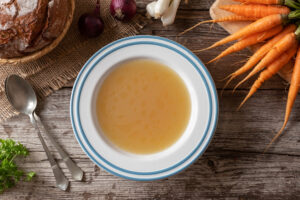 Bone broths have become a trendy and popular addition to the health nut’s diet of late, but real bone broth (not store-bought soup stock) is full of dozens of different nutrients including amino acids, collagen, gelatin and trace minerals.
Bone broths have become a trendy and popular addition to the health nut’s diet of late, but real bone broth (not store-bought soup stock) is full of dozens of different nutrients including amino acids, collagen, gelatin and trace minerals.
Simmering the parts of an animal that can’t be eaten directly such as bones and marrow, tendons and ligaments over a few days was how our ancestors made the most of the beast and all its nutrients.
But how does it help with arthritis and joint pain?
The collagen released while stewing the bones in the broth helps to restore the cartilage in our joints which degrade as we age. Nutritionist Dr. Josh Axe highly recommends consuming bone broths to protect joints due to the collagen constituents of the broth as well as it being a rich source of gelatin. Gelatin provides a lubricant between bones that “helps them “glide” without friction.” (Footer Link #4)
Like shark cartilage, bone broths also contain chondroitin sulfate and glucosamine – two important compounds which help to reduce inflammation and arthritis.
Sipping on a cup of warm bone broth (both chicken and beef are beneficial) is an excellent new habit to add to your health routine. You’ll not only be healing your gut and boosting your immune system, but also reducing inflammation and easing arthritic pain.
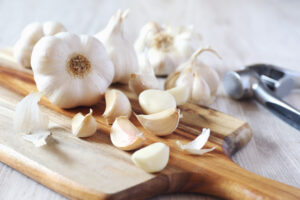 8. GARLIC
8. GARLIC
Garlic has been known as a fantastic defense against colds and flus and an immune system booster for a long time.
But you may not know that this faithful little spice contains an anti-inflammatory compound called diallyl disulfide which limits the effects of pro-inflammatory cytokines. Garlic makes the Arthritis Foundation’s list of best spices for Arthritis; “garlic can help fight inflammation and may even help prevent cartilage damage from arthritis.” (Footer Link #5)
This is a great excuse to keep adding garlic to your meals as much as possible, sprinkling it raw over your salads or even eating a whole clove each morning.
9. TURMERIC
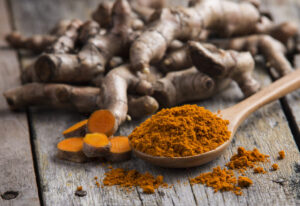 Turmeric is now showing up everywhere as a trendy addition to your usual snack/meal/biscuit/smoothie – heck, why have an ordinary old coffee when you can have a turmeric latte?!
Turmeric is now showing up everywhere as a trendy addition to your usual snack/meal/biscuit/smoothie – heck, why have an ordinary old coffee when you can have a turmeric latte?!
So why the popularity? Turmeric doesn’t just add a dashing yellow colour to your favourite smoothie, it is a spice full of powerful healing properties.
What’s most important for your arthritis is that turmeric contains curcumin which targets inflammatory cells and blocks certain enzymes that lead to inflammation.
Adding turmeric to your cooking is definitely worthwhile, but throwing it in smoothies and muffins will not give you the anti-inflammatory benefits you need. Turmeric only contains 2 to 9 per cent of curcumin so it’s best to supplements for a more efficient gain. Dr. Horwtiz from the University of Arizona College of Medicine says to look for turmeric supplements that say “standardized to 95% curcuminoids”. (Footer Link #6)
TIP: Make sure your turmeric contains ‘piperine’ or black pepper extract. The pepper combined with curcumin increases its bioavailability by 2,000 percent.
NOTE: The supplement may interact with some prescription medications and can possibly aggravate gall stone disease, advises Dr. Horwitz. Check with your doctor about dosage and if it’s a safe option.
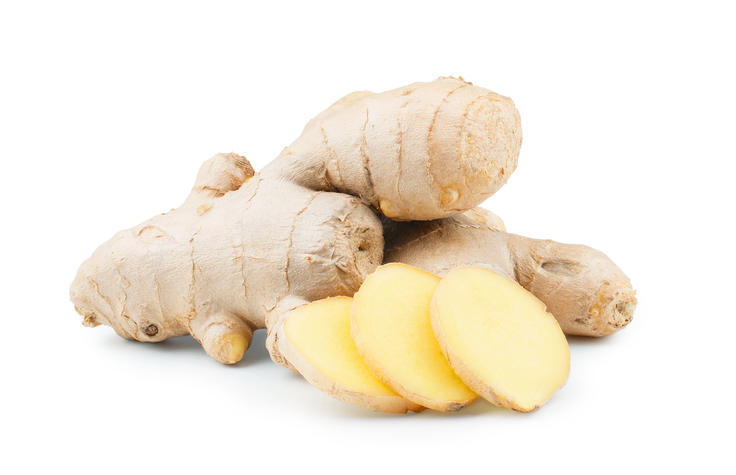 10. GINGER
10. GINGER
And we save one of the best for last!
This feisty spice is considered one of the best foods to combat arthritis symptoms. Like garlic and turmeric, it is also contains anti-inflammatory properties and it’s a great anti-oxidant too.
According to arthritis-health.com, ginger is very helpful in relieving pain and improving function for all types of arthritis, including rheumatoid arthritis and osteoarthritis. If you like scientific proof, 5 studies found that “those with osteoarthritis who took ginger had a 30% decrease in pain and a 22% reduction in disability, compared with control groups.” (Footer Link #7)
The chemicals in ginger that block inflammation pathways in the body are gingerol and shogaol.
TIP: Ginger is best used in its fresh form. An excellent way to get your ginger fix is by boiling it in a tea. Use a one-to-two inch piece of ginger and boil it for 30 to 60 minutes. *
—-
While it’s important to seek medical advice for treating your arthritis and often prescription medications are necessary, it’s very clear that our ever-loving Mother Earth has provided us with an abundance of wonderful healing foods. So, there are foods out there to help soothe your arthritis. Try them!
Try adding these colourful foods to your plate and watch your body love you for it.
Sources
- https://arthritis.org/
- https://medium.com/@AvasunHealth/how-avocado-can-potentially-help-arthritis-f139da1a8aab
- https://arthritis.org/health-wellness/healthy-living/nutrition/healthy-eating/12-best-foods-for-arthritis
- https://draxe.com/nutrition/bone-broth-benefits/
- https://arthritis.org/health-wellness/healthy-living/nutrition/healthy-eating/best-spices-for-arthritis
- https://creakyjoints.org/alternative-medicine/turmeric-curcumin-for-arthritis/
- https://www.arthritis-health.com/blog/add-ginger-help-arthritis-painhttps://www.healthline.com/nutrition/11-proven-benefits-of-olive-oil#section3

Nick Dale
Nick is a lover of all things mentally and physically healthy, a personal development geek and trained yoga teacher. With a background as an ESL Teacher, Actor and Writer, communication in its many and varied forms is what keeps him sparked.

